Building lesson plans is an integral part of every teacher’s day. Integrating technology into lessons (that may have previously existed in a totally non-technology infused version) can sometimes be difficult, especially if the task at hand can be easily completed without technology – many of us wonder why bother if we don’t have to. While …
Get Started for FREE
Sign up with Facebook Sign up with X
I don't have a Facebook or a X account
 Your new post is loading... Your new post is loading...
 Your new post is loading... Your new post is loading...
Debbie Goodis's curator insight,
October 19, 2013 11:16 AM
Can these posters be purchased and printed?
Mark Ayton's curator insight,
June 25, 2013 5:39 AM
This is an amazing resource. It lays out a matrix of 5 tech use levels against 5 activity types and provides video case studies in each matrix block for Maths, Science, Social Studies and Lauguage Arts. That's 100 easily accessed short video case studies! Although aimed at American K12 teachers the examples cover an amazing array of tools and techniques that will readily transfer to UK FE and Skills. 
Nick Nebelsky's curator insight,
June 26, 2013 12:30 PM
Finally a structure to build a curriculum around.... 
Dana Lott's curator insight,
July 2, 2013 3:42 PM
I saw the author of this philosophy and rubric as ISTE in Denver a few years back. Really great thoughts! Thanks, Jenn!

Drora Arussy's comment,
April 24, 2013 7:06 AM
Emerging, Engaging, Extending and Empowering, that is wonderful! Technology can be used across the board, and definitely empowers/self-directs. You're right they do line up.

Bobbi Capwell's curator insight,
May 6, 2013 9:10 AM
Good explanation of how to bridge integration to learning 
Jody Beesley-Lazarski's curator insight,
October 13, 2014 11:31 AM
Digital Media, included music, video, game based learning and various digital platforms are discussed in this article about how to effectively integration these technologies into class curriculum.
Rebecca Wilkins's curator insight,
July 17, 2015 9:28 PM
This is the first guide I have seen to help define technology integration. |

Lori Wilk's curator insight,
March 23, 2014 11:14 PM
This list of webistes offers suggestions for sites with tools to help teachers to create interactive learning environment from surveys, to lessons, to making short videos. Super helpful escpecially since there's both free and paid versions available. You can have teaching tools on a zero or low budget.#education#technology.

Diego Sánchez's curator insight,
July 10, 2013 8:15 AM
Technology is a tool, not a learning outcome...

Dean Mantz's curator insight,
January 1, 2014 2:09 PM
This is a well developed table addressing the integration of technology into classroom instruction all while basing pedagogy via the Learning By Design framework.
Rebecca Wilkins's curator insight,
July 17, 2015 9:22 PM
This is a nice marriage of technology integration and UbD. 
Jennifer McGuff's curator insight,
August 1, 2015 5:56 PM
Really like this graphic of technology integration and learning by design.
Daniel Weber's curator insight,
October 18, 2015 8:06 PM
This source offers some interesting ways to incorporate technology in team building/ice breaker activities. I hope to give some of these a try sometime. |





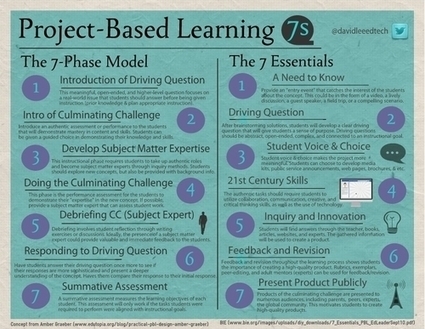




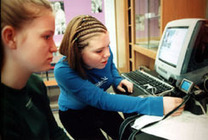




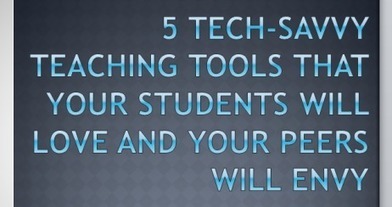
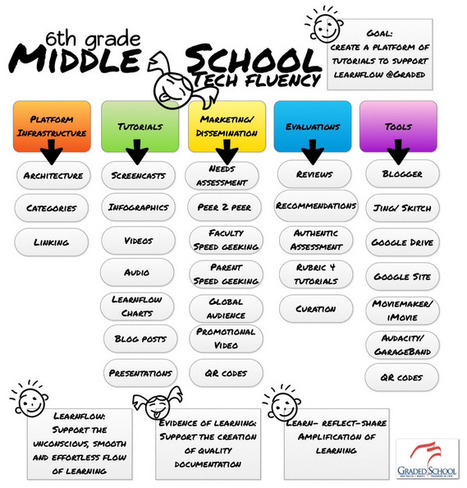

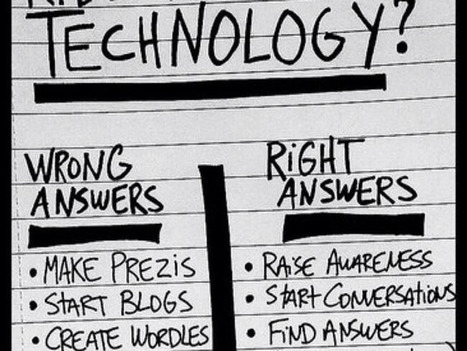
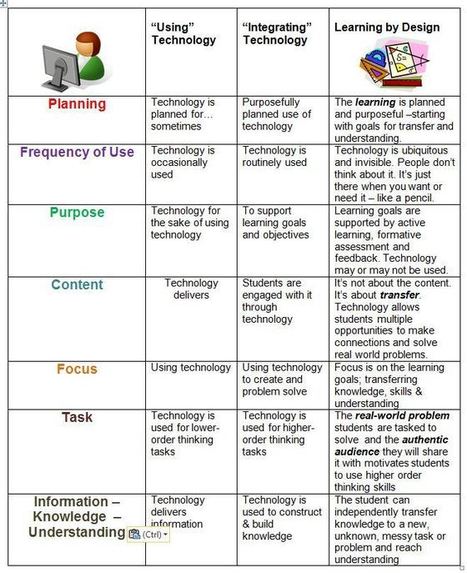

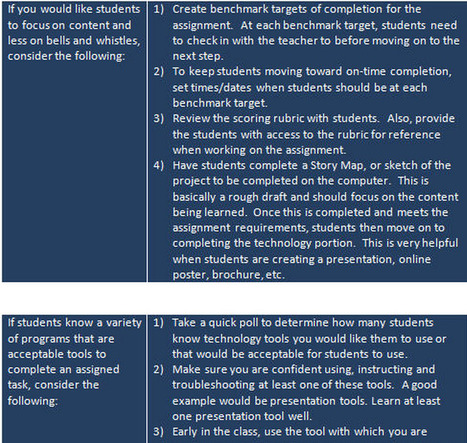
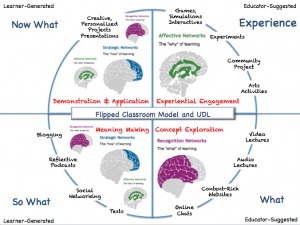






Check out this 4-step guide to creating effective lessons that integrate technology.
Step 1 - What level of learning is being addressed? The infographic looks at Bloom's, but you could use other resources as you design your lesson plan.
Step 2 - What level of technology will be used? SAMR (as in Substitution, Augmentation, Modification and Redefinition) are shown in the infographic, but there are other ways to look at the level of technology.
Step 3 - How should your classroom look? Four choices are provided.
Step 4 - How will you evaluate your students? Ten ideas are listed. You may find additional ones that you prefer to use.
As an initial framework to consider working with this visual may be a great tool, especially for folks who are still at the beginning phase of integrating technology into lessons.